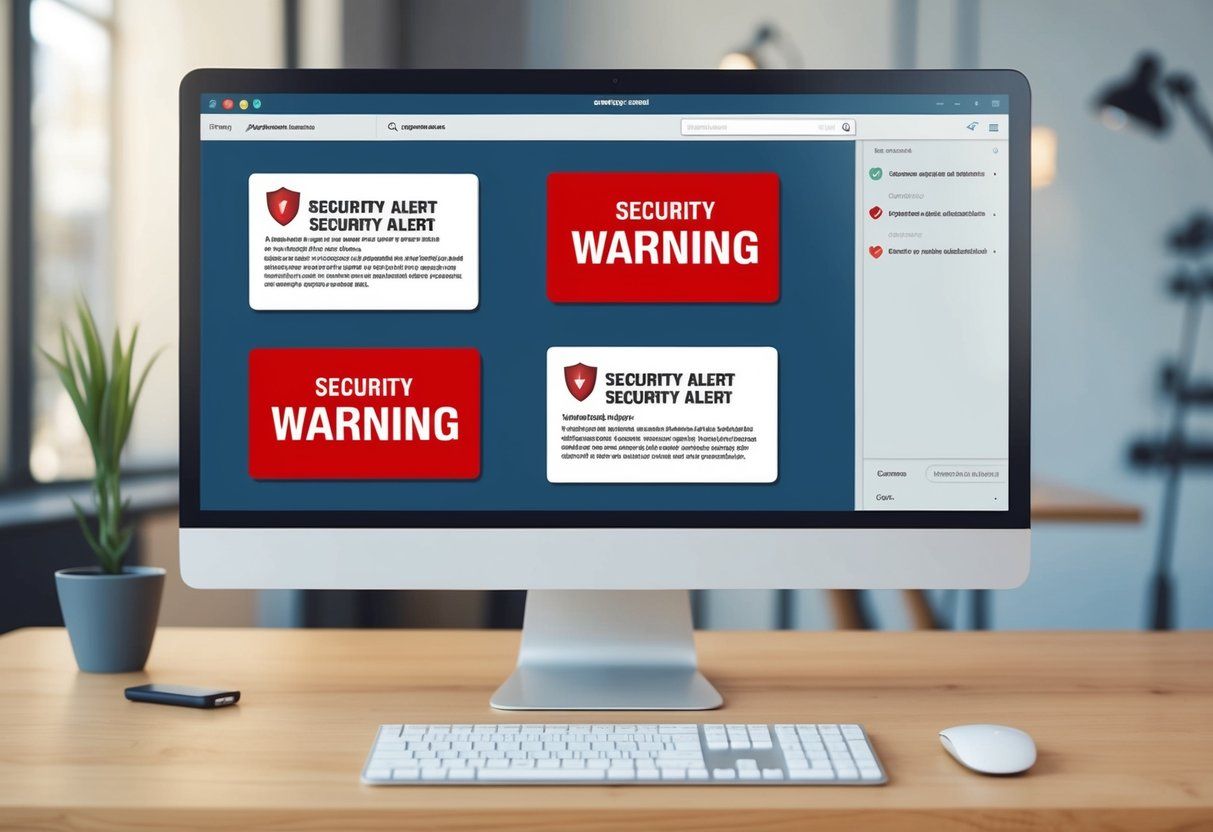Cisco Alerts: Backdoor Admin Account Used in Ongoing Cyber Attacks! Security Team Identifies New Threat Vector in 2025
Cisco has issued a critical security alert about a backdoor administrative account in its Smart Licensing Utility (CSLU) that hackers are actively exploiting. This vulnerability allows unauthorized users to gain administrative access to unpatched systems, potentially leading to serious security breaches. The critical flaw (CVE-2023-20198) involves undocumented static admin credentials that give attackers remote administrative access without requiring authentication.

Security researchers have observed ongoing attacks targeting this vulnerability, with hackers collecting configuration information and creating additional admin accounts on compromised systems. Cisco has removed the backdoor account in an update and strongly recommends that all users patch their systems immediately to prevent unauthorized access.
Key Takeaways
- A critical vulnerability in Cisco’s Smart Licensing Utility exposes systems to unauthorized administrative access through a backdoor account.
- Attackers are actively exploiting this flaw to create additional admin accounts and gather system configuration information.
- Immediate patching is essential as unauthenticated attackers can leverage this vulnerability to gain complete control of affected systems.
Overview of the Incident
Cisco recently issued critical security alerts about a backdoor admin account in their Smart Licensing Utility (CSLU) that attackers are actively exploiting. This vulnerability allows unauthorized access with administrative privileges to affected systems without authentication.
Nature of the Backdoor Exploit
The vulnerability (CVE-2023-20198) stems from undocumented static admin credentials built into the Cisco Smart Licensing Utility. This backdoor admin account provides complete administrative access to unauthorized users who can exploit it remotely without authentication.
Once attackers gain access through this backdoor, they can perform several malicious actions:
- Collect system configuration information
- Create additional administrative accounts
- Leverage other vulnerabilities
- Access multiple systems within the network
Cisco’s Product Security Incident Response Team identified that attackers use this initial access to escalate privileges and move laterally through compromised networks.
Scope of Impacted Systems
The vulnerability specifically affects the Cisco Smart Licensing Utility , which is used across multiple Cisco product lines for license management. Organizations using CSLU for license management are at significant risk.
Indicators of compromise include:
- Unauthorized administrative accounts
- Unusual system access patterns
- Unexpected configuration changes
Cisco Secure teams have observed these attacks targeting organizations across various sectors. The Canadian Centre for Cyber Security has also issued advisories about this vulnerability affecting Cisco devices.
Security experts report that ongoing attacks continue to exploit this critical flaw in unpatched systems.
Technical Analysis of the Attack

Recent investigations reveal sophisticated techniques employed by threat actors exploiting Cisco products. These attacks utilize a backdoor admin account for initial access and employ password-spraying tactics against VPN infrastructure to maintain persistence.
Persistence Mechanisms Used
The attackers primarily leverage an undocumented static user credential for an administrative account in Cisco Smart License Utility (CSLU). This backdoor provides continuous access even after system reboots or updates.
Security researchers discovered that after gaining initial access, threat actors establish additional persistence through:
- Creation of new privileged accounts
- Modification of existing authentication parameters
- Deployment of remote access tools that survive system restarts
The backdoor admin account appears particularly dangerous as it targets CSLU instances exposed directly to the internet. This vulnerability (tracked as CVE-2024-20439) carries a critical CVSS score of 9.8.
Threat actors maintain their presence by installing malicious scripts that execute automatically during system startup processes.
Methodology Behind Password-Spraying Attacks
Password-spraying represents a key component of the attack strategy against Cisco infrastructure. Unlike brute force attacks, password-spraying uses a small set of common passwords against numerous accounts to avoid triggering lockout protections.
Cisco has issued warnings specifically about these attacks targeting VPN concentrators used by large enterprises. The methodology typically follows this pattern:
- Collection of valid usernames through reconnaissance
- Application of common password patterns across multiple accounts
- Targeting of high-privilege accounts for maximum impact
The attacks show patience and sophistication, with threat actors often waiting weeks between attempts to avoid detection. Security teams should implement multi-factor authentication and monitor for unusual login patterns from unexpected locations.
Security Response and Mitigation
Cisco has taken swift action to address the backdoor admin account vulnerability in their Smart Licensing Utility. The company has released patches and provided detailed guidance for administrators to secure their systems against potential exploitation.
Immediate Steps Taken by Cisco
Cisco has removed the backdoor account in the Cisco Smart Licensing Utility (CSLU) that could be used to gain administrative privileges on unpatched systems. Their Product Security Incident Response Team issued a critical security advisory detailing the vulnerability, identified as CVE-2023-20198.
The company released emergency patches to eliminate the vulnerability. These updates have been prioritized for immediate deployment across all affected systems.
Cisco also implemented enhanced monitoring systems to detect any attempts to exploit this vulnerability. Their security teams are actively tracking suspicious activities that might indicate attackers trying to leverage this backdoor.
Incident Response Recommendations
Organizations using affected Cisco products should patch immediately to prevent exploitation. Security teams should verify that all CSLU installations are updated to the latest version which removes the backdoor account.
Administrators should also:
- Implement network segmentation to isolate vulnerable systems
- Review authentication logs for suspicious access attempts
- Check for unauthorized admin accounts that might have been created
- Monitor for unusual network traffic patterns
For Cisco Secure Firewall users, additional verification of configurations is recommended to ensure no unauthorized changes were made. Administrators should look for evidence of unauthorized access and configuration collection that might indicate compromise.
If suspicious activity is detected, organizations should initiate their full incident response protocols and consider engaging external expertise if needed.
Preventive Measures and Best Practices
Protecting against backdoor attacks requires implementing robust security measures and maintaining vigilant oversight of network systems. Organizations can significantly reduce their risk exposure by focusing on both core infrastructure security and comprehensive defense strategies.
Strengthening Active Directory Security
Active Directory (AD) serves as a central authentication point for many organizations, making it a prime target for attackers seeking to establish backdoor access. Monitor network traffic regularly to detect unusual activities that might indicate compromised credentials or unauthorized access attempts.
Review and audit AD permissions frequently. Remove excessive privileges and implement the principle of least privilege for all accounts. This ensures users only have access to resources necessary for their job functions.
Enable multi-factor authentication (MFA) for all administrative accounts to prevent unauthorized access even if credentials are compromised. Many backdoor attacks utilize stolen admin credentials as an entry point.
Implement strict password policies that require complexity and regular changes. Consider using a Privileged Access Management (PAM) solution to secure and monitor high-value administrative accounts.
Implementing Layered Defense Strategies
A multi-layered approach provides comprehensive protection against backdoor threats. Start by keeping all systems updated with the latest security patches, especially for critical vulnerabilities in Cisco products and other network infrastructure.
Deploy next-generation firewalls and intrusion detection systems to identify suspicious traffic patterns. Configure these tools to alert security teams about anomalous behaviors that might indicate backdoor activity.
Segment your network to limit lateral movement if an attacker gains access. This containment strategy prevents compromised systems from being used to access other parts of the network.
Conduct regular security assessments and penetration testing to identify vulnerabilities before attackers can exploit them. Consider implementing a security vulnerability policy similar to Cisco’s approach for consistent handling of potential threats.
Establish robust logging and monitoring systems to maintain visibility into all network activities. This enables security teams to detect and respond to potential backdoor attempts quickly.
Understanding the Impact on Businesses
Security vulnerabilities in Cisco products pose significant threats to business operations. The recent discovery of a backdoor admin account in Cisco Smart Licensing Utility and other vulnerabilities can disrupt critical network infrastructure.
Outages and Denial of Service Risks
Organizations using affected Cisco devices face serious denial of service (DoS) risks. Attackers can exploit these vulnerabilities by sending large numbers of VPN authentication requests to overwhelm systems. This flood of traffic can cause network devices to become unresponsive or crash completely.
The impact extends beyond momentary disruptions. Sustained DoS attacks can lead to extended outages of critical business services, resulting in lost productivity and revenue. For companies relying on continuous operations, even short periods of downtime can cost thousands or millions of dollars.
IT teams must prioritize patching these vulnerabilities immediately. Businesses should also implement network monitoring solutions to detect unusual traffic patterns that might indicate an ongoing DoS attack.
Implications for Remote Access Operations
Remote access infrastructure faces particular risks from these Cisco vulnerabilities. Malicious actors have successfully established unauthorized access through WebVPN sessions , compromising the security of remote access VPN (RAVPN) systems.
Once attackers gain access, they can collect configuration information and create additional administrative accounts. This gives them persistent access to company networks even after initial vulnerabilities are patched.
For businesses with hybrid work models, these threats directly impact employee productivity and data security. Organizations should:
- Implement multi-factor authentication for all VPN connections
- Regularly audit admin accounts and access logs
- Consider network segmentation to limit potential damage
These measures can help businesses maintain secure remote access operations while protecting sensitive data from unauthorized access.
Assessment of Security Infrastructure
Analyzing the current security posture reveals critical gaps exploited by attackers using the Cisco CSLU backdoor admin account. Effective infrastructure assessment requires both improved detection capabilities and refined alerting mechanisms to prevent similar breaches.
Improving Threat Detection Systems
Organizations must enhance their threat detection capabilities to identify unauthorized access attempts via undocumented admin credentials. The critical Cisco CSLU vulnerability exposes systems to remote admin access by unauthenticated attackers through static credentials.
Security teams should implement:
- Network monitoring tools that detect unusual authentication patterns
- Behavior analysis systems to identify suspicious admin-level activities
- Regular credential audits to discover undocumented access points
Disabling legacy features like the Cisco Smart Install is essential, as CISA has observed threat actors actively exploiting these components.
Visibility across network infrastructure must extend to all potential access vectors, including VPN sessions where malicious actors have established unauthorized access.
Reducing False Positives in Alerting
Alert fatigue represents a significant challenge when protecting against backdoor vulnerabilities like those found in Cisco systems. Security teams must calibrate alerting systems to distinguish between normal administrative actions and potential exploit attempts.
Key strategies include:
- Contextual alerting that considers user roles and expected behavior patterns
- Alert correlation to identify related suspicious activities across multiple devices
- Prioritization frameworks based on risk scores and asset importance
Alerts specifically targeting undocumented static admin credentials should receive high priority, as these represent avenues for complete system compromise.
Teams should establish baseline administrator behavior patterns and flag deviations, particularly those involving configuration changes to authentication systems or command-and-control communications similar to those identified by Cisco Talos.
Frequently Asked Questions
The Cisco CSLU backdoor admin account vulnerability requires specific detection methods and targeted mitigation strategies. Organizations need practical guidance on identifying compromises and implementing effective security measures.
How can organizations detect if they are affected by the backdoor admin account compromise?
Organizations should immediately check for the presence of the Cisco Smart Licensing Utility (CSLU) in their environment. This Windows application manages licensing for Cisco products and contains the vulnerability.
IT teams should review authentication logs for unexpected administrative access or unusual login patterns. Suspicious activity often appears during non-business hours or from unfamiliar locations.
Network traffic analysis can reveal communication with unknown command and control servers, which may indicate exploitation of the backdoor account.
What steps should be taken to mitigate the risk associated with this type of cyber attack?
Immediately applying Cisco’s security patches is the most critical step to remove the backdoor account from affected systems. Organizations should prioritize this update above routine maintenance.
Implementing network segmentation limits lateral movement if attackers gain initial access. This contains potential breaches to smaller sections of the infrastructure.
Enforcing strong credential management and multi-factor authentication provides additional security layers that can prevent unauthorized access even if the vulnerability exists.
What are the common indicators of compromise to watch for in network activity logs?
Unusual privileged account creation or modification often signals that attackers have escalated to administrative privileges within the system. These new accounts may have names similar to legitimate service accounts.
Unexpected outbound connections from CSLU installations to unfamiliar IP addresses indicate potential data exfiltration or command reception from attackers.
Increased failed authentication attempts might show brute force attacks targeting the backdoor account before successful exploitation.
How can businesses ensure their network devices are protected against unauthorized admin access?
Implementing the principle of least privilege ensures users and applications have only the minimum access needed for their functions. This limits potential damage from compromised accounts.
Regular security audits help identify vulnerabilities before attackers can exploit them. These should include reviewing all active accounts and their permission levels.
Network monitoring tools can alert security teams to unusual administrative actions or configuration changes that might indicate unauthorized access is occurring.
What are Cisco’s recommendations for preventing exploitation of network infrastructure vulnerabilities?
Cisco strongly advises maintaining current security updates across all products and services. The company has issued specific patches addressing the CSLU vulnerability that organizations should apply immediately.
Implementing role-based access control restricts administrative capabilities to only necessary personnel, reducing the attack surface.
Cisco recommends deploying their Secure Firewall technology with intrusion prevention features enabled to detect and block exploitation attempts targeting known vulnerabilities.
In what ways can continuous monitoring and threat intelligence improve an organization’s defense against similar cyber threats?
Real-time security monitoring allows for the immediate detection of suspicious activities related to active exploitation attempts. This early warning system is crucial for limiting breach impact.
Threat intelligence feeds provide information about newly discovered vulnerabilities and attack techniques. Organizations subscribing to these services can implement protective measures before becoming victims.
Automated security response systems can quarantine affected systems when indicators of compromise are detected, preventing further lateral movement by attackers.
Building better solutions for better business®




